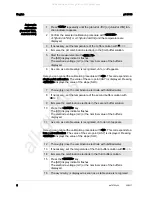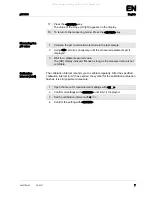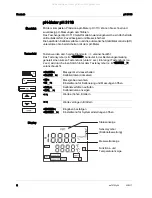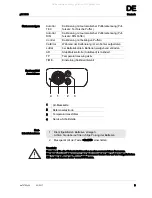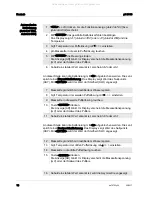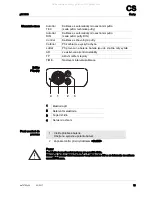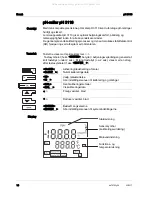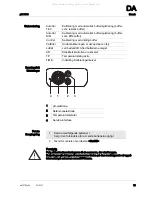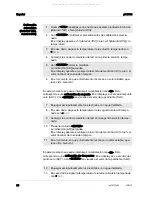
English
pH 3110
6
ba75782y04
05/2017
Automatic
calibration
(AutoCal TEC,
AutoCal DIN)
Here you can cancel the calibration procedure with <M>. This corresponds to a
single-point calibration. The value of the zero point (ASY) is displayed. Pressing
<ENTER> displays the value of the slope (SLO).
Here you can cancel the calibration procedure with <M>. This corresponds to a
two-point calibration. The value of the zero point (ASY) is displayed. Pressing
<ENTER> displays the value of the slope (SLO).
1
Press <CAL> repeatedly until the
[AutoCal TEC]
or
[AutoCal DIN]
fun
-
ction indicator appears.
2
Confirm the selected calibration procedure with <ENTER>.
ct1
[AutoCal TEC]
or
cd1
[AutoCal DIN]
and the temperature are
displayed.
3
If necessary, set the temperature of the buffer solution with < >< >.
4
Immerse the pH combination electrode in the first buffer solution.
5
Start the measurement with <ENTER>.
The [AR] display indicator flashes.
The electrode voltage (mV) or the nominal value of the buffer is
displayed.
6
As soon as a stable value is recognized,
ct2
or
cd2
appears.
7
Thoroughly rinse the combination electrode with distilled water.
8
If necessary, set the temperature of the second buffer solution with
< >< >.
9
Immerse the combination electrode in the second buffer solution.
10
Press the <ENTER>
key.
The [AR] display indicator flashes.
The electrode voltage (mV) or the nominal value of the buffer is
displayed.
11
As soon as a stable value is recognized,
ct3
oder
cd3
appears.
12
Thoroughly rinse the combination electrode with distilled water.
13
If necessary, set the temperature of the third buffer solution with < >< >.
14
Immerse the combination electrode in the third buffer solution.
15
Press the <ENTER> key.
The [AR] display indicator flashes.
The electrode voltage (mV) or the nominal value of the buffer is
displayed.
16
The asymmetry is displayed as soon as a stable value is recognized.
All manuals and user guides at all-guides.com
all-guides.com






